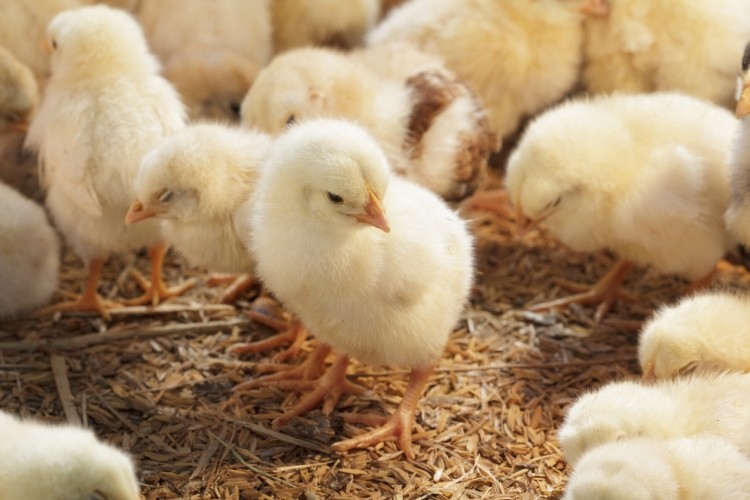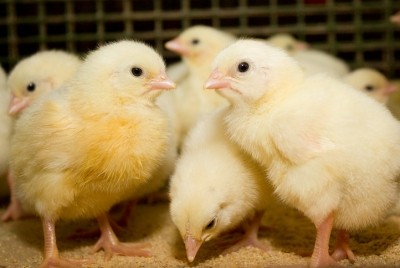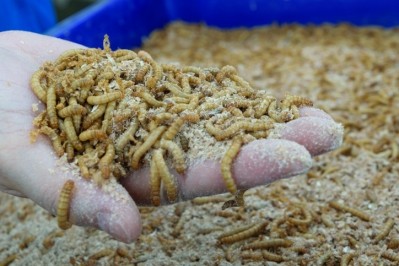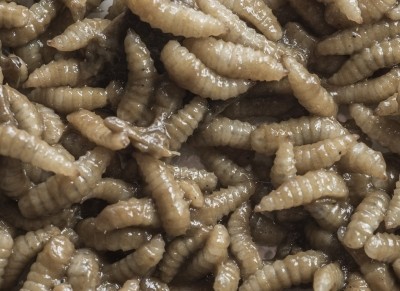Special Edition: Alternative feed proteins
Insect meal may offer sustainability boost to poultry producers

The team, based at several universities in Brazil and BUG Biological Agents, examined the role that insect meal could have in improving the sustainability of poultry production when used as a source of feed protein. The group published its work in the Journal of Cleaner Production.
“This study used emergy assessment as a tool to study thermodynamics and explore the potential of creating and processing [Black Soldier Fly larvae] BSFL, in order to replace soybean meal as the protein component of the diet of broilers in Brazil,” noted the researchers.
Emergy analysis is a metric to account for the 'real wealth' of products and services by considering the process within nature and human society, other than their exchange values determined by the market.
“An experiment developed in Brazil, which creates BSFL from grain residues resulting from the creation of other insects destined for use in agricultural biological control, was used to calculate the emergetic values of inputs and outputs of the process and the respective emergy indicators,” they added. “The use of this new protein source was compared with traditional soybean meal in a poultry farm using the same methodology.”
The research team found that substitution of black soldier fly larvae (BSFL) meal was more reliant on renewable inputs and that less energy was used to generate the alternative feed protein, they said.
“These results, based on an experimental model, imply that BSFL meal can improve sustainability in the Brazilian poultry production process,” they said.
However, additional work on insect meal regulation and production is needed.
Why insect meal?
Growing populations and food consumption patterns are increasing demand for proteins, the researchers said. However, those protein sources need to be produced in a sustainable manner.
Although poultry is one meat that could address the increase in demand, meat production systems may need large quantities of land, water and energy, they said.
Previous assessments of broiler facilities found that indirect water use in grain production covered about 99% of total water use.
Brazil is a major poultry producer and exporter, they said. But there are environmental factors including pollution, and the availability of natural resources, which could limit additional expansion of poultry production.
“The production of poultry is more efficient than that of other meats (especially beef), and poultry can feed more people, while requiring less land than beef,” said the researchers. “However, poultry production is not totally efficient because of its usage of nutrients that are available in grains such as corn and soybean.”
Intensive production of animal proteins often means that grains are used in animal diets, they said.
Finding ways to capture additional energy from nutrient sources is one area where practices might be improved, they said. “One approach to answering these questions is to investigate the use of insects as feed to improve the sustainability of the poultry sector,” they added.
Of the insects explored, BSFL can be a bioreactor able to take energy from organic waste to generate protein and lipids useable in animal feed, they said. The insects also can improve environmental footprint by reducing the volume of waste.
“Even if zootechnical enhancements can improve feed conversion, converting feed to meat will always generate residues,” the researchers said. “The challenge is to slow down this entropic process by using all the available nutritive potential (energy) of feed before disposing of it in nature as residue.”
Thermodynamic metrics may be used to describe the performance of a material or technology, they said.
Methods and materials
An emergy approach can be used to evaluate several kinds of systems, said the researchers. Emergy is the “embodied energy” needed to generate a flow and the assessment measures system contributions in terms of work and is expressed as solar equivalent Joules (seJ).
Three steps are involved in assessing the system, the said. These include: “a) construction of a systems energy flow diagram defining the main components and the system boundaries; b) organization of the data in an emergy evaluation table; c) calculation of emergy indices and discussion of the results for practical purposes,” they added.
The sum of the inputs used in the system established the emergetic value, they said.
In the assessment of BSFL production in Brazil, information from an experimental facility was used, the researchers said. The insects consume organic material including fruits, grain residue and manure to generate protein, lipids and chitin or insect meal and organic compounds.
In the study, two poultry farms using either soybean meal (SBM) or insect meal (IM) as their protein source were considered, they said. In other aspects, the farm practices and inputs were found to be similar.
Results
Although insect meal production is still in experimental models, it is already demonstrating the possibility its use could improve the sustainability of the poultry sector, said the researchers.
The emergy assessment of IM processing and production calculated a total emergy flow of 2.91E+17 sej a year, the researchers said. The products and by-products generated about 2.65E+5 kg/year and an energy flow of about 6.01E+12 seg/kg.
However, the examination of SBM production found 2.43E+12 seg/kg, they said. By determining the calorific value of each product (J) in relation to emergy flow a measure of the product’s efficiency can be found.
“The transformity of insect meal was calculated as 78,408 sej/J, in comparison to 191,899 sej/J for SBM, which represents an improvement of 144.74% for insect meal over SBM,” they said.
Insect production is an intensive and industrial process, but fly larvae are a natural and renewable input with the ability to convert organic material as a protein source, the researchers said. The insects offer a small emergy flow in the industrial process.
“Comparing both protein sources, IM shows a relative increase of 45.64% in renewability in comparison to SBM,” they said. “Although economy constitutes a significant fraction of emergy flows in IM production and processing, the renewability of the inputs involved in the process is 54.62%, while the same figure for SBM is 33.39%.”
When considering the emergy yield ratio for the two ingredients, IM production had a total emergy flow similar to the emergy flow from the economy, they said. However, SBM needed a large volume of natural resources so the total emergy flow is greater than the flow coming from the economy.
“Another way to demonstrate sustainability is the analysis of the environmental loading ratio (ELR), they said. “For this index, the higher the renewable fraction of the emergy flow, the lower the index. IM presented a better value (1.04) than SBM (1.99), which impacts positively on the emergy sustainable index (ESI) values of 0.96 for IM and 0.86 for SBM.”
Similarly, when evaluated as a feed ingredient in poultry production there were emergetic gains and improved sustainability, the researchers said. “Lower total emergy flow, a reduction of 16.45% in the transformity of poultry meat production with the use of IM, as well as a gain in renewability of around 25.03% in comparison to the current poultry industry (which uses SBM) show that using this new technology in a Brazilian poultry supply chain could result in improvements in sustainability,” they added.
When examining the environmental costs or loading ratio (ELR) insect meal was found to reduce the ELR indicative of a process that uses more renewable sources, they said.
However, there are some challenges that remain to be addressed, they said. The challenges include legislation that needs to be changed to allow use of insect meal in feed and permit insects to be raised, at least in part, using manure.
“Public and private institutions from all over the world must join forces to construct a global regulatory document aiming the applicability of this sustainable biotechnology,” they said. “Phytosanitary, biodiversity, disease control and the environmental issues are among the themes that must be regulated.”
Additionally, more work is needed to establish commercial-scale production facilities, they said.
Source: Journal of Cleaner Production
Title: Insect as feed: An emergy assessment of insect meal as a sustainable protein source for the Brazilian poultry industry
DOI: doi.org/10.1016/j.jclepro.2017.09.244
Authors: G Allegretti, E Talamini, V Schmidt, P Bogorni, E Ortega














